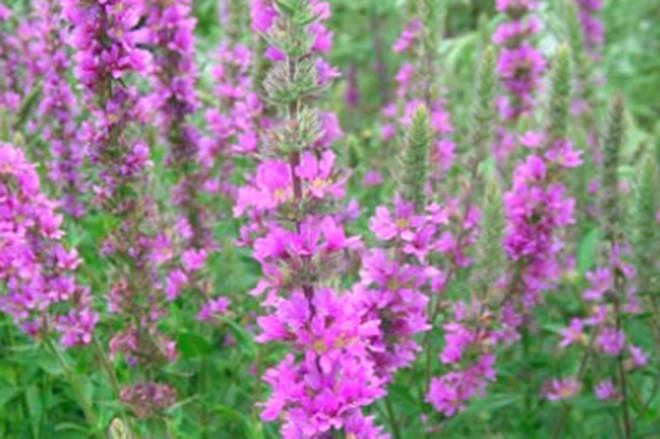A group of 10 or so volunteers battled to thwart an invasion in the Campbell River Estuary last Thursday.
Under the hot sun, they were busy working at Baikie Island Nature Reserve to remove an influx of purple loosestrife. Along with removing the invasive plant, volunteers had the chance to learn about plant identification through a special app called iNaturalist and help conduct a mini species inventory of the area.
“We’re working today with the Nature Conservancy of Canada to do invasive species management work in the Campbell River Estuary,” said Cynthia Bendickson, Executive Director of local conservation group Greenways Land Trust.
Purple loosestrife is considered, alongside other invasive species like Himalayan blackberry, as one of the bigger threats to native vegetation in the region of the Campbell River Estuary.
“Aggressive non-native plants are a rampant threat to native plant communities and the species that depend on them,” said Nature Conservancy of Canada Conservation & Engagement Coordinator Travis Muir in a news release. “Conservation volunteer events are an excellent way to tackle the problem while also having fun. Conservation through collaboration can greatly increase our impact which is why we are so enthusiastic to be working with Greenways Land Trust on this project.”
The Nature Conservancy of Canada (NCC) is a not-for-profit private land conservation organization that, since 1962, has helped protect more than 1.1 million hectares of natural habitat across the country, including almost 400,000 hectares in B.C.
The NCC worked with Greenways Land Trust to organize the volunteer event on July 26 as part of an effort to re-establish a healthy, self-sustaining population of native plants at the site.
While purple loosestrife may have a beautiful appearance, it can overrun the native vegetation at marsh and riverbank areas of the estuary and can even present problems for boats when navigating through the waterways areas.
“It’s a wetlands species that can tend to take over marsh areas within the estuary,” Bendickson said. “In B.C. particularly, it’s a huge problem…. It tends to out-compete a lot of other species and can take over, so other species don’t have room to grow.”
She described the estuary as “a jewel in the city” and important to all kinds of wildlife, including the city’s well-known tyee run, and credited the efforts of many partners such as the Wei Wai Kum First Nation, the City of Campbell River and the Nature Conservancy of Canada in helping to make the site a thriving wildlife habitat.
“Purple loosestrife has been here for several years … at least a couple of decades,” Bendickson said.
“The land, when it was originally restored in the early 2000s, it was here as well…. We’re hoping to make a big final push with this in the next couple of years, to actually eradicate it from the estuary.”
Through groups such as Greenways Land Trust and its partners, the estuary has been undergoing a transformation.
Baikie Island and it surrounding foreshore was purchased in 1999 by the Nature Conservancy of Canada and the City of Campbell River, along with support from the local community and The Tula Foundation.
Current restoration work focusses on removing invasive species and planting the area with native vegetation.
